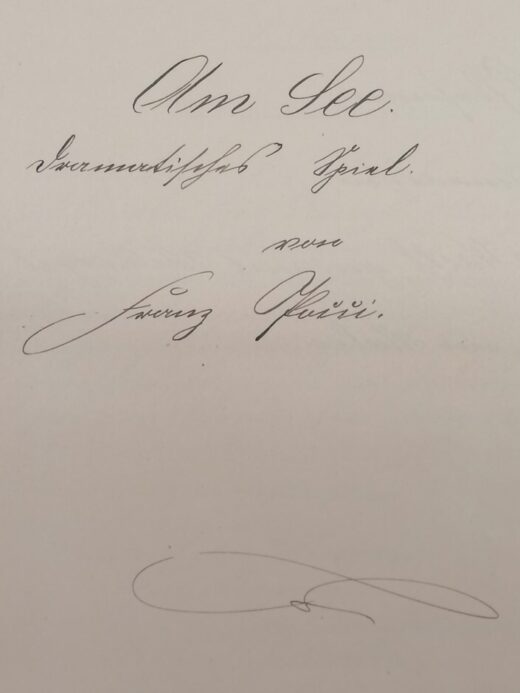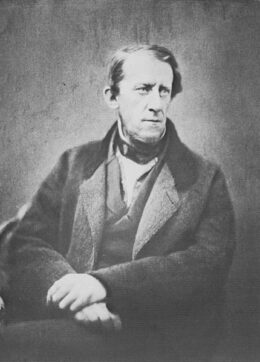
Manuscript
15 pages
Author(s)
Am See
The title page of the manuscript in the Münchner Stadtmuseum attributes the play to Franz Pocci. The play depicts a brief romance in the country, a theme typical of the Biedermeier era that took hold in Austria and South Germany in competition with the Romantic Movement during the restoration period following the Congress of Vienna (1815). Am See inherits from the particular aesthetics of this period the interest in simple people and small things, the taste for sentimentality and daydreaming, as well as the references to classical authors - such as Mozart or Goethe - rather than to the more radical Romantic writers. The character of Wastl appears as a Taugenichts, the 'good-for-nothing' figure popularised by a novel by Joseph von Eichendorff published in 1826. Dressed with feathers 'in a funny way' ('etwas drollig'), spending the whole day singing, whistling and catching birds, Wastl is also reminiscent of the bird-catcher Papageno from The Magic Flute, with whom Pocci was familiar. The nostalgia for Italy expressed in the painter Wilhelm's song "Wunderland wo die Zitronen..." ("Wonderful land where lemons...") evokes the famous song of Mignon in Goethe's novel The Years of Learning of Wilhelm Meister (1795-1796), "Kennst du das Land wo die Zitronen blühn" ("Do you know the land where lemon trees bloom").
The simple country life
The fisherman's daughter Lisi and the young bird-catcher Wastl live by a lake in Germany. They offer hospitality to the painter Wilhelm, who has just returned from Italy. The short play ends with a song to nature and joy.
